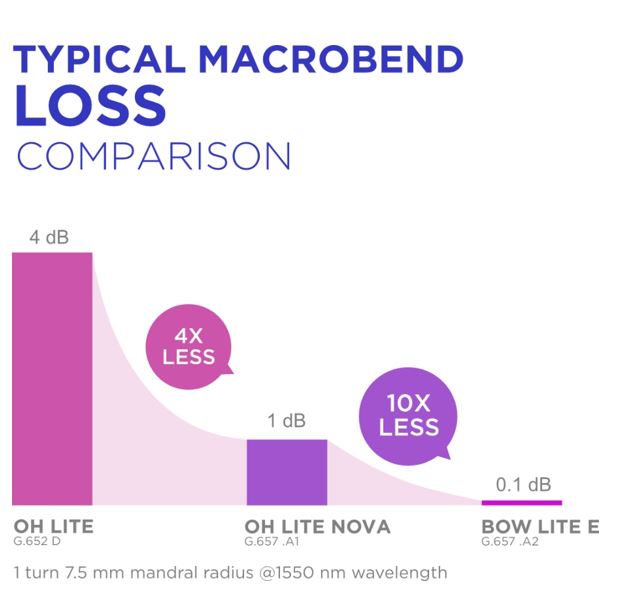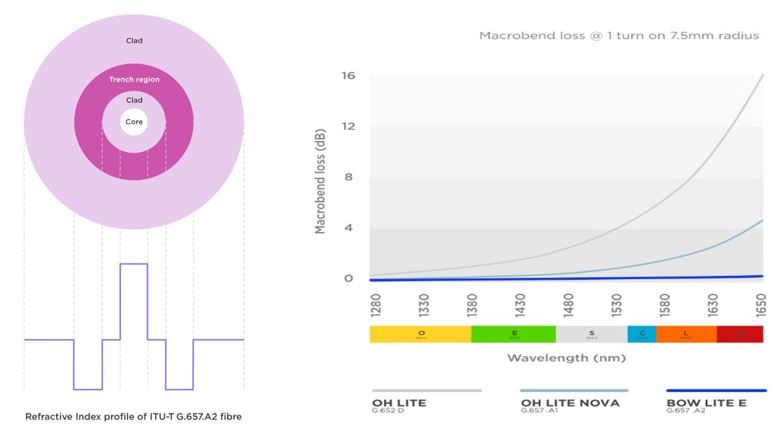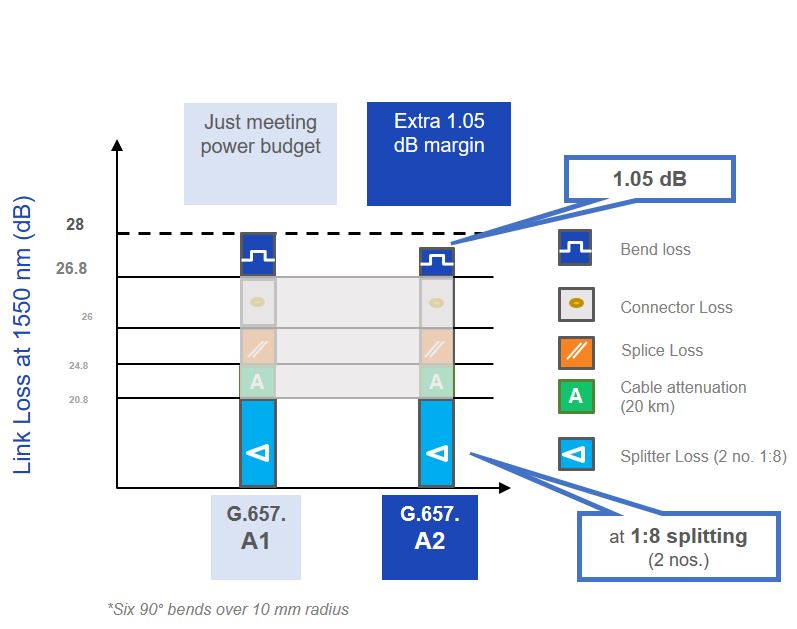We discuss the following topics in this blog:
- How Do We Accommodate 5 ZB of Data Consumption per Year?
- Increase the wavelength spectrum used for data transmission
- Increase the number of fibres in a single cable.
In addition to these topics, we shall also be answering the following FAQs:
- What is WiFi?
- What is an Optical Fibre Cable?
Contents
How Do We Accommodate 5 ZB of Data Consumption per Year?
Fundamentally, data travels as signals (or packets) of light in the fibres. In a single fibre, there are multiple wavelengths of light carrying different sets of data. So there are basically 2 ways of increasing the data transfer capacity:
- Increasing the wavelength spectrum used for data transmission
- By using reduced water peak fibres
- By using longer wavelengths of fibres (>1550nm)
- Increasing the number of fibres in a single cable.
What are the Solutions?
- Increasing the wavelength spectrum used for transmission
- By using reduced water peak fibres: The below diagram clearly shows how A2 category fibres are able to utilise the E-band wavelengths (water absorption spectral region) by keeping the signal losses within the permissible limit as compared to D category fibres. This gives the benefit of 100nm extra transmission capacity. That translates to a 33% gain in the CWDM transmission with 4 additional channels.

- By using longer wavelengths of fibre: The challenge faced while using longer wavelengths is the increase in attenuation but more importantly the signal loss at bends which in fact is a big concern because in the real world wires aren’t going to be straight parallel lines drawn on a map. The wires need to bend at various points to reach the final end user. We developed state of the art technology, BOW LITE (E). With this technology, the bend losses were reduced by 99.75%, from 4dB in legacy G.652.D cables to 0.1dB in G.657.A2 (BOW LITE (E)).

But how did we achieve this? We added a new layer to our cables, which increases the difference in the refractive indices of the core and the outside, this helps in with the internal reflection of light hence keeping it inside the core meaning no signal lost. This is how we have drastically reduced the data loss at bends even for longer wavelengths of light.

The above graph clearly shows that the A2 fibres don’t discriminate on the basis of colour (of light), The bend losses are kept low at higher wavelengths allowing higher data transfers.
Other benefits of using A2 fibre is that due to the decreased bending loss, the network reach increases by 16km and enables higher splitting ratio.

A major concern related to adoption of A2 fibres would be the splice compatibility with D fibres because of the current widespread use of it. Our research while splicing G.652.D and G.657.A2 fibres, shows a mere 0.054dB splice loss operating at 1310nm wavelength and an even less 0.045dB loss at 1550nm. Such low values clearly depict that the A2 fibres are splice compatible with D fibres.
Another factor to take into consideration would be the longevity of the cables. Owing to its low bend losses and attenuation the network lifetime shows an increment of a minimum of 10 years, and extends the time taken for optical loss threshold/ link attenuation to reach ‘2x beginning of life (BOL)’ value making it even more cost effective in the long term.
2. Increasing the number of fibres: The challenge with increasing the fibre capacity is the limited diameter of the ducts and limitations during storage, transport and installation. Solution? Reducing diameter of fibres from 250 microns down to 200 microns as well as increasing the packing efficiency of the cable with our new Micro cables having 432 Fibres in a mere 8.6mm diameter. That translates to 59% less area with 6 times the fibres as compared to conventional cable with had 72 fibres in 13.5 mm diameter.

Related Posts
FAQs
What is WiFi?
Put simply, WiFi is a technology that uses radio waves to create a wireless network through which devices like mobile phones, computers, printers, etc., connect to the internet. A wireless router is needed to establish a WiFi hotspot that people in its vicinity may use to access internet services. You’re sure to have encountered such a WiFi hotspot in houses, offices, restaurants, etc.
To get a little more technical, WiFi works by enabling a Wireless Local Area Network or WLAN that allows devices connected to it to exchange signals with the internet via a router. The frequencies of these signals are either 2.4 GHz or 5 GHz bandwidths. These frequencies are much higher than those transmitted to or by radios, mobile phones, and televisions since WiFi signals need to carry significantly higher amounts of data. The networking standards are variants of 802.11, of which there are several (802.11a, 802.11b, 801.11g, etc.).
What is an Optical Fibre Cable?
An optical fibre cable is a cable type that has a few to hundreds of optical fibres bundled together within a protective plastic coating. They help carry digital data in the form of light pulses across large distances at faster speeds. For this, they need to be installed or deployed either underground or aerially. Standalone fibres cannot be buried or hanged so fibres are bunched together as cables for the transmission of data.
This is done to protect the fibre from stress, moisture, temperature changes and other externalities. There are three main components of a optical fibre cable, core (It carries the light and is made of pure silicon dioxide (SiO2) with dopants such as germania, phosphorous pentoxide, or alumina to raise the refractive index; Typical glass cores range from as small as 3.7um up to 200um), Cladding (Cladding surrounds the core and has a lower refractive index than the core, it is also made from the same material as the core; 1% refractive index difference is maintained between the core and cladding; Two commonly used diameters are 125µm and 140µm) and Coating (Protective layer that absorbs shocks, physical damage and moisture; The outside diameter of the coating is typically either 250µm or 500µm; Commonly used material for coatings are acrylate,Silicone, carbon, and polyimide).
An optical fibre cable is made up of the following components: Optical fibres – ranging from one to many. Buffer tubes (with different settings), for protection and cushioning of the fibre. Water protection in the tubes – wet or dry. A central strength member (CSM) is the backbone of all cables. Armoured tapes for stranding to bunch the buffer tubes and strength members together. Sheathing or final covering to provide further protection.
The five main reasons that make this technology innovation disruptive are fast communication speed, infinite bandwidth & capacity, low interference, high tensile strength and secure communication. The major usescases of optical fibre cables include intenet connectivity, computer networking, surgery & dentistry, automotive industry, telephony, lighting & decorations, mechanical inspections, cable television, military applications and space.

















